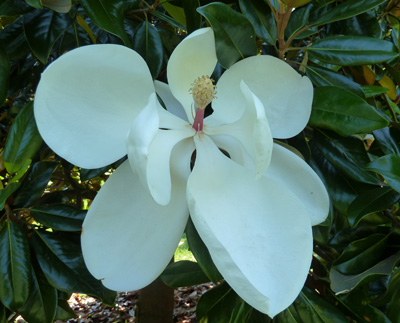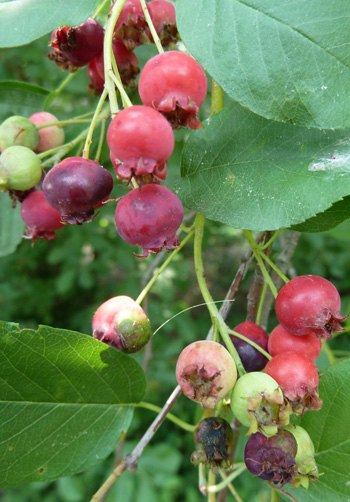Plants of the Week: June 13

Now is a prime time to enjoy the vibrant blooms of Opuntia, commonly known as prickly pear cactus. You can find a patch of it in the Nason Garden and outside the Science Center. Native to only the Western Hemisphere and found in abundance in Mexico, Opuntia is the most cold-hardy of the lowland cacti and is found as far north as Canada. The fruit is edible when carefully pealed and cleaned to remove both the large and small spines. Photo credit: L. Stiebitz

Marshallia grandiflora, blooming along Kohlberg Hall, is native to the floodplains of the southeastern United States. Clumps of glossy, bright green leaves give rise to 18-inch flower stalks bearing single flowers. Heads of tubular pinkish mauve daisy florets last several weeks. Provide full sun to partial shade in a moist location. Photo credit: J. Coceano

The specific epithet grandiflora translates to “large flower” and Magnolia grandiflora lives up it its namesake. Large, white flowers erupt among the waxy, evergreen leaves. Mature trees can attain heights of 60-90 feet. Those with less space can plant magnolia cultivars like ‘Kay Parris’ that are smaller and slower growing. A collection of M. grandiflora can be seen in full bloom around the Ben West House. Photo credit: J. Coceano

The ripening fruits of Amelanchier alnifolia, also known as the Saskatoon serviceberry, provide a late spring feast for wildlife. Native to North America, the deciduous shrub ranges from northwestern Canada and into the northern and western ranges of the United States. Interestingly, the city of Saskatoon, Saskatchewan is named after the plant. Photo credit: J. Coceano





No Comments